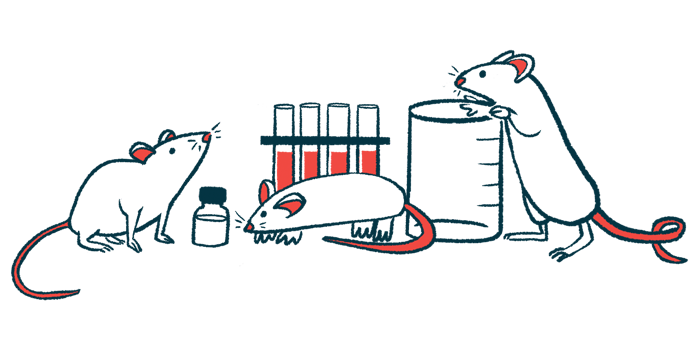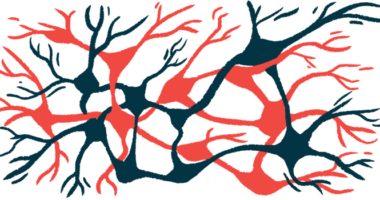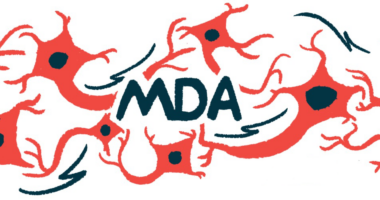Noninvasive spinal stimulation shown to extend survival in mice
New treatment approach also seen to slow ALS progression: Study

A new treatment approach that noninvasively delivers gentle electrical stimulation to the spinal cord and peripheral nerves — the nerves that connect the brain and spinal cord to the rest of the body — was found to slow disease progression and extend survival in a mouse model of amyotrophic lateral sclerosis (ALS).
Called Multipath Direct Current Stimulation, or Multipath DCS, this approach is the same one that’s used in Pathmaker Neurosystems‘ MyoRegulator, a noninvasive nerve-modulation device that the company is testing in ALS clinical trials. These new findings continue to support the benefits of this technology for people with ALS.
“These results provide compelling evidence that our noninvasive treatment approach can meaningfully impact disease progression,” Nader Yaghoubi, MD, PhD, cofounder and CEO of Pathmaker, said in a company press release.
According to the release, the “results are compelling, with treated mice exhibiting a 74% increase in survival time from disease onset compared to untreated counterparts.”
The study, “Multi-path direct current spinal stimulation extended survival in the SOD1-G93A model of amyotrophic lateral sclerosis,” was published in the journal Frontiers in Neurology. The research was funded by the National Institutes of Health (NIH), and the study’s first author is the scientific founder of Pathmaker.
ALS is caused by the progressive death of motor neurons, which are the nerve cells in the brain and spinal cord responsible for controlling movement. While the exact causes of motor neuron loss are still unclear, hyperexcitability — when nerve cells fire more often or more intensely than they should — and the accumulation of toxic protein clumps in nerve cells are both thought to play a role. The mild electrical currents delivered by Multipath DCS are believed to address these key features of ALS.
“Noninvasive electrical and magnetic brain stimulation studies have shown the potential to slow disease progression in ALS patients,” the researchers wrote.
Few studies, however, have explored whether electrical stimulation targeting the spinal cord could offer similar benefits, according to the scientists.
Researchers tested Multipath DCS approach in mouse model of ALS
To learn more, a team from the City University of New York tested Multipath DCS in SOD1-G93A mice, a widely used ALS model that carries a mutation in the SOD1 gene — a common genetic cause of ALS. These animals have many key features of ALS, including hyperexcitability and the buildup of abnormal SOD1 protein clumps in motor neurons.
When the first signs of muscle weakness became evident, the mice were randomly assigned to receive electrical stimulation with the Multipath DCS device or no stimulation.
The stimulation was delivered through electrode patches placed on the skin over the spine. It was designed to flow to return patches placed near the sciatic nerves in the legs and on the abdomen. Sessions lasted one hour and were conducted three times per week for three weeks.
The results showed that treated mice lived significantly longer: On average, survival was 21.6 days after symptom onset compared with 12.4 days in the untreated group, reflecting a 74% increase.
The therapy was found to reduce abnormal nerve activity as expected. In early disease stages, treated mice showed fewer bursts of muscle activity, with nerve firing dropping from 34 to 13.9 spikes per second. In later stages, when nerve firing became continuous and reflexes were lost, the therapy suppressed this overactivity and restored reflexes.
At the molecular level, treated mice had nearly 50% less mutant SOD1 protein. The animals also showed reduced levels of NKCC1, a protein linked to nerve cell overactivity, and higher levels of HSP70, a protein known to protect neurons.
As a result, mice that received stimulation showed greater preservation of motor neurons, with 54% more surviving motor neurons in the spinal cord than untreated mice, and better performance on motor tests.
Similar spinal stimulation approach being tested in humans
Pathmaker is now focusing its efforts on the ongoing CALM trial (NCT06649955), which is assessing its MyoRegulator device in about 15 people with ALS. Funded by the U.S. Department of Defense, the trial involves treatment three times a week for four weeks, followed by a six-month follow-up.
Our ongoing efforts are directed [toward] translating this innovative treatment into clinical development. … This trial … represents a significant advancement in our journey to bring this novel modality to clinical use.
In addition to testing the device’s safety and feasibility, researchers will also examine a number of efficacy measures, including changes in functional disability, quality of life, muscle strength, lung function, and excitability.
“Our ongoing efforts are directed [toward] translating this innovative treatment into clinical development,” said Yaghoubi. “This trial … represents a significant advancement in our journey to bring this novel modality to clinical use.”








